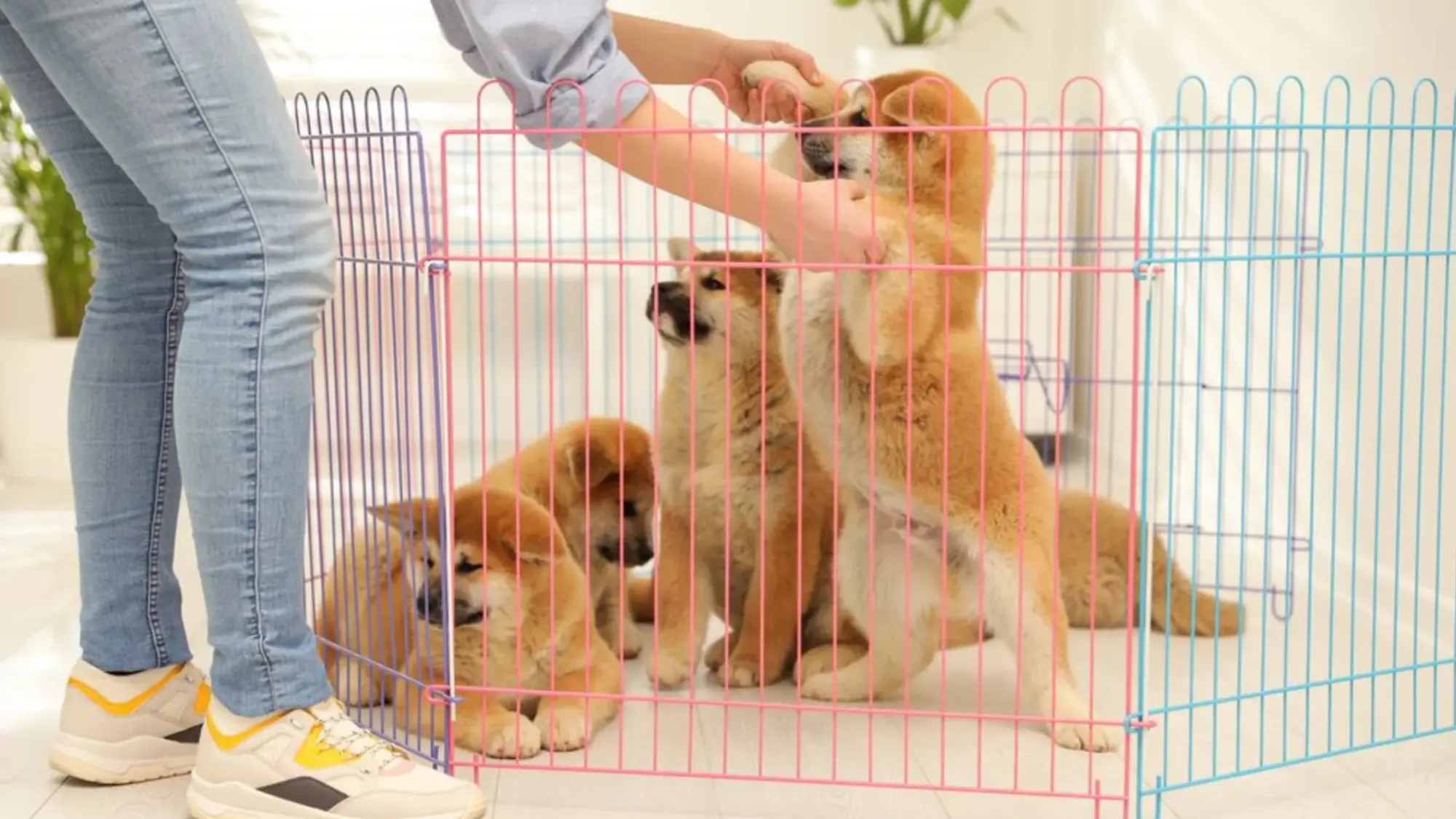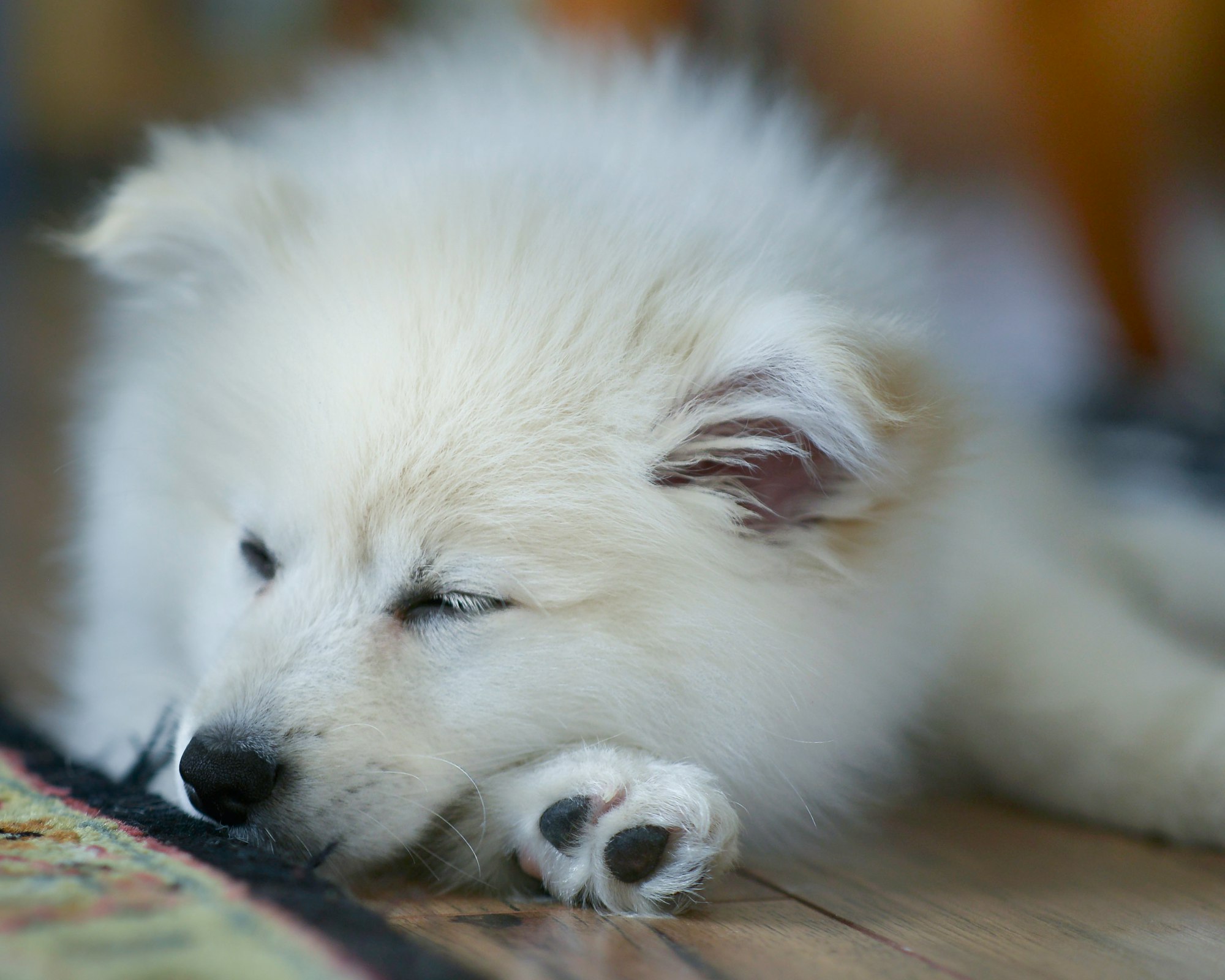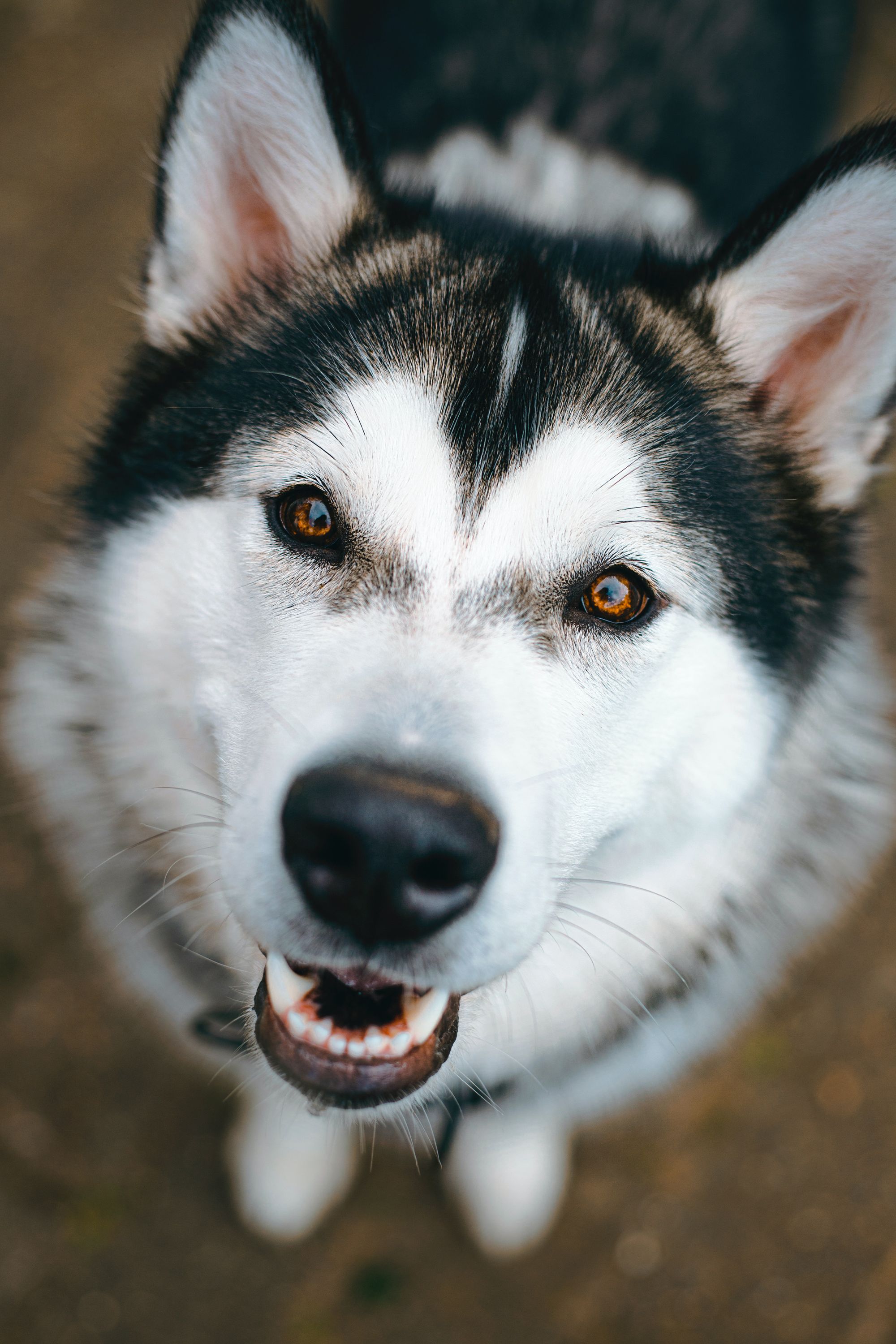Are you a proud new puppy owner looking for a safe, convenient way to contain your furry friend? Dog playpens have gained popularity as a practical solution for managing your puppy's playtime and providing them with a secure space to explore. But are dog playpens a good option for puppies? This blog post will dive into the pros and cons of using a dog playpen for your adorable bundle of joy. We'll explore the benefits of puppy playpens, such as providing a designated area for play and training, as well as potential drawbacks, including restricted movement and potential dependence. By the end, you'll better understand whether a dog playpen is the right choice for your puppy's needs.
What is a Dog Playpen, And How Does It Differ From a Crate or Kennel
It is your top priority to ensure the safety and well-being of your furry friend. Every pet parent must have a dedicated space for their dogs to play or rest. Dog playpens, crates, and kennels are the top choices for pet owners to keep their dogs secure while providing them with a designated area for their activities. But do you know the difference between these three? This blog will explain the features, benefits, and differences between a dog playpen, crate, and kennel.

What is a Dog Playpen?
A dog playpen is a physical barrier that keeps dogs confined to a particular area. It is a versatile indoor or outdoor play area, arranged in different shapes to suit the environment and pet's needs. It is relatively easy to assemble and disassemble and can be transported from one place to another. With a playpen, your pet can get ample space to move around freely and have fun. Playpens are also great for house-training puppies or separating smaller dogs from larger ones.

What is a Dog Crate?
A crate is an enclosed space made up of plastic, wire, or fabric, which serves as a den for your furry friend. It is a secure and comfortable space for your pet to curl up and relax. It is also an efficient training tool to aid in potty training or to control undesirable behavior, like chewing or barking. A crate is usually used for short-term confinement, such as when traveling or at night. Crates are available in different sizes, shapes, and colors.
What is a Dog Kennel?
A kennel is a larger unit that can accommodate multiple dogs or provide more space for a single dog. It is a spacious, robust outdoor or indoor shelter to keep your furry friend secure. A kennel generally has a roof, walls, and floor made of durable material such as metal or plastic. Kennels are ideal for pet parents who want a semi-permanent or permanent structure for their furry friend. Kennels come in various sizes, designs, and materials to cater to pet owners' needs.
What are the Differences Between a Dog Playpen, Crate, and Kennel?
The primary differences between a dog playpen, crate, and kennel are the size, shape, and intended use. Playpens provide an open space for your furry friend to move around while eliminating chances of destruction to the home. Crates, on the other hand, provide a secure, comfortable, and den-like space for your dog, especially for house training or travel. Kennels are ideal for pet owners who want to provide extended shelter for their furry friend outdoors. Kennels offer durability, security, and weather protection that crates and playpens may not provide.
Pros of Using a Dog Playpen - Safety, Comfort, Stress-Free Playtime
You want them to be comfortable, safe, and happy. One way to ensure that your dog enjoys playtime without you having to worry about their safety is by using a dog playpen. Playpens are the perfect solution to keep your dog confined while giving them room to play. Here are some pros of using a dog playpen that you should know about.
- Safety: One of the biggest advantages of using a dog playpen is safety. It is safer than letting your furry friend run around your house unsupervised. A playpen will keep your dog contained in a specific area, making it easier for you to monitor them. It is especially important to keep an eye on your furry friend when you are not around. Using a playpen will ensure that your dog stays safe and doesn't cause any damage to your home while they explore and play.
- Comfort: A playpen provides a comfortable space for your dog to play and relax without feeling confined. You can add a bed, toys, and water dishes to make it even more comfortable. Some playpens have a built-in mat, making it a soft and cozy space for your dog to snuggle up. By providing a comfortable space, you are keeping your dog safe and ensuring that they are happy and content.
- Stress-free Playtime: Dogs love to play and explore, and a playpen can provide them with a stress-free space. It allows them to move around and play without being confined to a crate. A playpen allows your dog to play and exercise without feeling overwhelmed or anxious. It also gives you peace of mind knowing that your furry friend is entertained and enjoying playtime without getting into trouble.
- Great for Training: Dog playpens are ideal for training puppies or newly adopted dogs. Puppies and younger dogs require constant supervision, and a playpen will give them a safe space to play and interact while you're busy. It's also an effective way to potty train your dog. Dogs are naturally clean animals and try to avoid doing their business in their playpen, making it easier for you to train them.
- Easy to Clean: Another advantage of using a playpen is that it's easy to clean. Many playpens are made of materials that can be wiped down or hosed off, making them easy to maintain and keep clean. It is especially useful if your furry friend has accidents or sheds heavily.
A dog playpen is a great investment for pet owners who want to ensure their furry friend's safety, comfort, and happiness during playtime. Playpens provide a safe, comfortable, and stress-free space for dogs to play and explore. They are also great for training puppies and younger dogs and are easy to clean. A playpen is worth considering if you're a dog owner looking to keep your furry friend safe and happy.
Cons Of Using A Dog Playpen - Potty Training Difficulties, Lack Of Socialization, Unsuitable For Older Dogs
While playpens are perfect for puppies and young dogs, they're not always the go-to solution for every situation. You should know about some cons of using a dog playpen.
- Potty Training Difficulties: When potty training your dog, a playpen can be more of a hindrance than a help. Playpens can give your dog the impression that it's okay to relieve themselves within the four walls of the pen, even if you've placed a potty pad or litter box inside. It is because dogs naturally avoid doing their business in their living space, but when the space is small enough, they tend to regard it as the same environment.
- Lack of Socialization: Playpens can limit your dog's socialization skills. Dogs are social creatures that need human and canine interaction to develop proper social skills. Being confined to a playpen for long periods may lead to aggressive or fearful behaviors, which can be concerning if you plan on exposing your dog to other animals or people.
- Unsuitable for Older Dogs: It's important to remember that a dog playpen is more suitable for puppies and young dogs, as they have plenty of energy to burn and must be kept out of harm's way. As dogs age, they need more room to move around and exercise. Placing an older dog in a playpen could lead to feelings of frustration and anxiety, which could be detrimental to their physical and mental health.
- Lack of Mental Stimulation: Playpens can become boring over time, especially if your dog is kept in a pen for long periods without much interaction. This lack of mental stimulation could lead to destructive behaviors like chewing on furniture or barking excessively.
- Limited Space: Playpens can provide a confined space for your dog but can also hinder its range of motion. Dogs need space to stretch their legs, jump around, and play. If your playpen is too small, your dog may become lethargic and inactive, leading to a decline in overall health.
While playpens can be a useful tool for pet owners, it's essential to consider your dog's individual needs and lifestyle before placing them in one. Potty training difficulties, lack of socialization, unsuitability for older dogs, limited space, and lack of mental stimulation are some of the cons of using a dog playpen. If you decide to use a dog playpen, research the ideal size and type of playpen for your dog, and always supervise your pet when they're inside the pen.

Types of Dog Playpens - Soft-Sided, Hard-Sided, Folding
Dog playpens can come in handy when it comes to providing a safe and secure space for your furry best friend. As a pet parent, you want to keep your pup safe and happy, especially if you are away or need to restrict your dog from a certain area. Choosing the right playpen for your pup can be daunting, given the different types and features. In this blog, we'll discuss the three main types of dog playpens, namely soft-sided, hard-sided, and folding playpens, to help you make the right decision for your pup.
Soft-Sided Dog Playpens:
As the name suggests, soft-sided dog playpens are made of soft materials such as mesh, nylon, or canvas. They are lightweight and easy to move around, which makes them perfect for traveling. Soft-sided playpens come in small to large sizes and can be zipped or secured with loops or ties. They are easy to store when not in use, which is a bonus for pet parents with limited home space.
However, it's worth noting that soft-sided playpens are not sturdy, which means they are unsuitable for aggressive or large dogs. These playpens can also develop rips or tears, especially if your dog is a chewer. So, if you choose a soft-sided playpen, make sure it is made of high-quality materials appropriate for your dog's size and behavior.
Hard-Sided Dog Playpens:
Unlike soft-sided playpens, hard-sided playpens are made of durable materials such as plastic, metal, or wood. They are sturdy and secure, and some even come with a roof or a door for added safety. Hard-sided playpens are ideal for puppies or dogs prone to chewing or escaping. They come in different sizes; some can be connected to create a larger play area.
However, hard-sided playpens can be heavy and bulky, which makes them less portable than soft-sided playpens. They can also take up a lot of space in your home, so you must ensure enough room for them. Additionally, some hard-sided playpens may not be as easy to clean as their soft-sided counterparts.
Folding Dog Playpens:
Folding dog playpens are a combination of soft-sided and hard-sided playpens. They are made of soft materials such as mesh or nylon and have a sturdy frame made of metal or plastic. Folding playpens are easy to set up and take down; some can be used indoors and outdoors. They come in different sizes and can be folded for easy storage.
Folding playpens are suitable for most dogs but may not be as sturdy as hard-sided playpens. They can also be chewed or ripped if your dog is particularly persistent. Therefore, it's important to supervise your pup while they are playing in a folding playpen.
Choosing the right dog playpen for your pup depends on several factors, such as your dog's size, behavior, and needs, as well as your lifestyle and living space. Soft-sided playpens are perfect for traveling and small dogs, while hard-sided playpens are great for puppies and larger breeds. Folding playpens offer a good balance between portability and sturdiness. Whichever playpen you choose, ensure it is safe and comfortable and provides your dog enough space to play and relax.
Why a Playpen Can Be Good for Puppy Development
Playpens are an excellent investment for new puppy parents looking to create a safe environment. From preventing accidents to promoting independence, here's why a playpen can benefit your little one.
- Provides a Safe Space: Puppies are curious creatures and love to explore every nook and cranny of their new surroundings. However, that desire to explore can lead them into harm's way. Playpens provide a haven for your puppy to play and rest without worries. You can control the playpen environment by removing any hazardous objects and preventing your pet from sustaining injuries or consuming anything harmful.
- Promotes Independence: Puppies need plenty of time to develop their independence, and one way to facilitate this is through a playpen. A playpen provides a safe space for your puppy to play and explore without being under your constant supervision. The more time your puppy spends exploring and learning independently, the more confident they become, helping them develop essential skills to navigate the world.
- Helps with House Training: House training a puppy can be a frustrating and time-consuming process. Luckily, playpens can help with this task. Puppies don't like to soil the area where they play and rest. Therefore, a playpen provides an ideal solution; it allows you to leave your puppy in a designated area while you're away, limiting their access to the parts of the home that you don't want them to eliminate. It helps you keep your puppy on a schedule leading to a successful house-training process.
- Provides Mental Stimulation: Puppies have boundless energy that must be adequately channeled to prevent destructive behavior. A playpen provides a confined area where your puppy can play with toys or treat puzzles, promoting mental stimulation and preventing boredom and stress. This mental stimulation is crucial for your puppy's emotional and psychological development and keeps them happy and healthy.
- Encourages Socialization: Socialization is an essential aspect of puppy development, and playpens play a vital role in facilitating it. Playpens provide a secure and controlled environment where your puppy can interact with other humans and pets, building their confidence and social skills. Socialization helps your puppy grow into a well-adjusted and friendly adult dog, making navigating through social situations easier.
Conclusion
A puppy playpen is an asset to your pet's safety and well-being. While the pros of providing a safe area for your pup to play in weigh heavily, you should consider each puppy's needs and preferences when deciding what type of playpen to get. It is important to keep some necessary elements, such as comfortable bedding and lots of interactive toys, within reach for your pet to be properly entertained while confined in the cage. Also, don't forget that proper exercise and regular potty breaks are key to maintaining a healthy pup. Ultimately, with thoughtful consideration, finding the perfect playpen for your four-legged friend shouldn't be a hard task.

